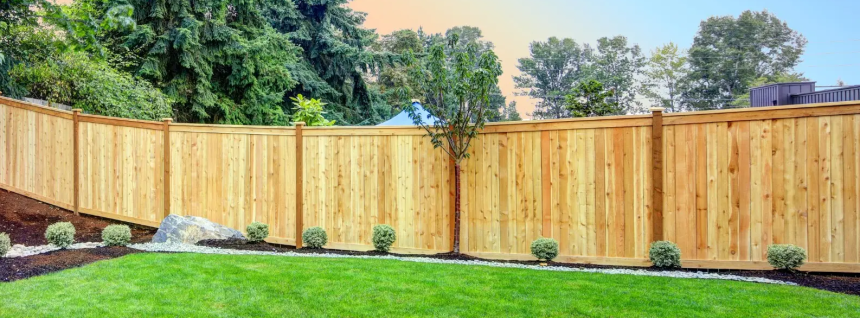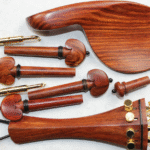Timber fencing has stood the test of time for centuries, gracing landscapes with its natural beauty and enduring charm. More than just a practical boundary, a timber fence can be a transformative element, adding warmth, privacy, and a touch of rustic elegance to your outdoor haven.
In this comprehensive guide, we’ll delve into the world of timber fencing, exploring its advantages, different types, and essential considerations when choosing and maintaining the perfect fence for your needs. So, grab a steaming cup of tea, settle in, and prepare to be inspired by the possibilities timber fencing unlocks!
Why Choose Timber Fencing?
Timber fences offer a wealth of benefits that go beyond mere aesthetics. Here are just a few reasons outlined by Casey Fencing to consider this timeless option:
1. Natural Beauty: Timber’s inherent warmth and organic texture add an undeniable charm to any outdoor space. From the rich hues of cedar to the honeyed tones of pine, timber fences blend seamlessly with nature, creating a sense of tranquility and groundedness.
2. Durability: When treated properly, timber fences can withstand the elements for decades. Their inherent strength and resilience make them ideal for windy areas or properties with rambunctious pets.
3. Privacy: Timber fences, especially close-board styles, offer excellent privacy, shielding your backyard from prying eyes and creating a secluded haven for relaxation and entertainment.
4. Versatility: Timber fences come in a vast array of styles, from the classic picket fence to the rustic charm of post and rail. This versatility allows you to tailor the fence to your specific needs and aesthetic preferences.
5. Sustainability: Choosing sustainably sourced timber contributes to responsible forestry practices and minimizes environmental impact. Many treated timber options also utilize eco-friendly preservatives.
Exploring the Timber Fencing Landscape
The world of timber fencing is a diverse one, offering a myriad of options to suit your taste and budget. Let’s take a closer look at some of the most popular types:
1. Close-board: This style features vertical boards spaced closely together, offering maximum privacy and security. It’s perfect for creating secluded backyards or screening unsightly areas.
2. Palings: Similar to close-board fencing, palings are vertical boards but with wider gaps between them. This allows for some light and air to pass through while still providing a good degree of privacy.
3. Picket: This charming style features evenly spaced vertical pickets, often with decorative tops. It’s ideal for adding a touch of whimsy and visual interest to your property.
4. Post and rail: This rustic style features horizontal rails supported by sturdy posts. It’s a great choice for large properties or areas where a more open feel is desired.
5. Featherboard: This unique style features overlapping boards that resemble feathers. It’s a beautiful and distinctive option that offers excellent weather resistance.
Choosing the Right Timber for Your Fence
Not all timbers are created equal when it comes to fencing. Here are some key factors to consider when making your choice:
1. Durability: Opt for naturally rot-resistant or pressure-treated timber to ensure your fence withstands the elements for years to come. Popular choices include cedar, redwood, and pressure-treated pine.
2. Maintenance: Some timbers require more maintenance than others. Cedar, for example, naturally weathers to a silvery-gray patina, while pine may need occasional staining or painting.
3. Budget: Timber prices can vary considerably depending on the type and treatment. Cedar and redwood are typically more expensive than pine, but their longevity often offsets the initial cost.
4. Aesthetics: Consider the overall look and feel you want to achieve. Lighter timbers like pine offer a brighter aesthetic, while darker woods like cedar create a more dramatic effect.
Essential Considerations for Timber Fencing Installation
Once you’ve chosen the perfect timber frame for your fence, it’s time to think about installation. Here are a few key things to keep in mind:
– Permits: Check with your local authorities to see if any permits are required for installing a fence.
– Property lines: Be sure to clearly mark your property lines before starting any digging.
– Post foundations: Secure posts in concrete footings to ensure the fence’s stability and longevity.
– Drainage: Proper drainage is crucial to prevent the timber from rotting. Consider sloping the ground away from the fence or installing gravel at the base.
– Hardware: Use galvanized or stainless steel hardware to prevent rust and corrosion.
Maintenance and Care
To ensure your timber fence lasts long and continues looking great, regular maintenance is key. Firstly, you need to clean your fence regularly with a mild detergent or a specialized wood cleaning solution to remove dirt, algae, and mildew. On top of this, you need to apply a stain or sealant every 2 to 3 years to protect the wood from moisture, UV rays, and pests. This not only extends the life of your fence but also keeps it looking fresh.
It is also important to check for any signs of damage or pest infestations, and address these issues promptly to maintain the integrity of the fence.
Timber Fencing: The Natural Choice for Your Property
Choosing a timber fence is an investment in both beauty and functionality. Its natural charm, durability, and versatility make it a timeless choice for any property. So, embrace the warmth of wood, explore the variety of styles, and let your timber fence add a touch of rustic elegance to your outdoor haven.














